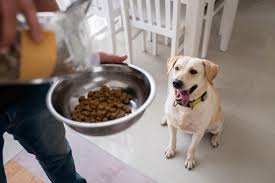crate training is more than just a popular training method; It is a valuable tool for increasing a happy and well -erected dog. Whether you are a first time pet parent or an experienced dog owner in the United States, learning to train a dog can help you create a safe and comfortable place for your beloved friend. By reducing stress to prevent catastrophic behavior, box training provides many benefits. This step-by-step guide will go through the process of choosing the right box and teaching your dog to love their new location.
The Benefits of Crate Training
Before we get into the “how-to,” let’s talk about why crate training is worth your time. Here are some key benefits:
- Promotes a Sense of Security: Dogs are natural and it is expensive. A box gives them a comfortable, safe place to retreat when needed to relax or loneliness.
- Helps with Potty Training: With the right box use, dogs can learn bladder control faster, making the potty training process very easy.
- Reduces Unwanted Behavior: Holding a dog in a box while unheard of in your home protects from chewing, scratching or other devastating habits.
- Eases Travel and Vet Visits: A cash registered dog takes a lot of rest when traveling or cycling on a veterinarian.
- Emergency Preparedness: If you need to empty, the transport and temporary housing will be smooth by having a cratere.
Now that we understand the benefits, let’s look at how to crate train a dog successfully.
Step 1: Choose the Right Crate
Finding the right crate is essential. Here’s what you need to keep in mind:
- Size Matters
A box should be enough to get your dog, walk around and lie comfortably, but not so big that they can use a corner as a bathroom. For puppies, consider obtaining a box with an adjustable dividing line so it can grow with them. - Material Options
The boxes come in line, plastic and soft -time options. Wiring boxes are good for visibility and ventilation, while plastic boxes provide more privacy. Soft-tummy boxes are lightweight and portable, but are not ideal for cheer. - Durability and Safety
Make sure the box has strong and safe locks. High energy dogs can try to escape, so choose a box built to meet their determination. - Make it Comfortable
Add a soft bed or blanket to invite the box. If your puppy is a cheer, choose a durable, chewing math.
Step 2: Introduce Your Dog to the Crate
Introducing the crate should always be a positive experience. Here’s how to do it:
- Set the Stage
Place a cool, but a box in a cool, but often used area as a living room. Keep the door open and add a soft bed or favorite toy to make it more attractive. - Create Positive Associations
Start by throwing or playing in the box to encourage your dog to find. When they go in, praise them warmly even though it’s a moment. - Feed Meals in the Crate
Start serving the dog’s food near or inside the box. It creates a positive relationship between the box and some loved ones. When they become comfortable eating from the inside, close the door during the meal and open it as soon as they do. - Start Slow
Don’t rush the process. Let your dog get into the box independently and end in the preliminary stages to create a trust.
Step 3: Build Up Time in the Crate
Once your pup is familiar with the crate, it’s time to extend the duration of their stay.
- Practice Short Sessions
Encourage your dog to settle in the box for a short period while staying at home. Start with 5-10 minutes, extend the time slowly when they show comfort. - Use Commands
Learn signals as“crate” or “go to bed” and reward your dog as they go into the box to listen to it. Constant training will help your dog understand the command over time. - Step Out Briefly
When your dog is in the box, you can practice getting out of the room. Start with a short absence (1-2 minutes) and slowly make them alone without worrying about getting them to know your dog to know how long.
Step 4: Overnight Crate Training
Nighttime crate training can be particularly useful for managing puppies. Here’s how to make the transition smoother:
- Place the Crate Nearby
The first nights, hold a box in your bedroom so your dog can feel your look and feel safe. - Take Potty Breaks
Puppies contain small leaves and may require pot brakes at night. Put an alarm to take them out in the middle of the night until they can sleep without accidents. - Stick to a Routine
Dogs thrive with stability. To establish a pre -Prior routine, hold the puppy in the box at the same time every night.
Tips for Successful Crate Training
Here are a few advanced crate training tips to ensure your dog thrives:
- Never Use the Crate as Punishment: The crate should always be a safe and happy place, not something associated with bad behavior.
- Be Patient: Some dogs take more time than others to adjust the box. Stay calm and keep the sessions positive.
- Use Interactive Toys: Puzzles and treatment dispensers can catch your dog and make the box more comfortable.
- Gradual Progress: If your dog seems worried, go back a step back and move slower. Sliding very hard can cause mistakes.
Wrapping Up
Don’t learn to train your dog. By choosing the right box, thinking it and practicing stability, you can help your dog feel at home in your new safe place. crate training provides countless benefits, from easy journeys to reduce stress. With patience and perfect approach you will have a well -adjusted dog that sees your cotton as a sanctuary.
Whatever you are in the United States, these checkout tips can put you and your beloved partner to succeed. Remember to enjoy this process and celebrate every little milestone on the way!


















